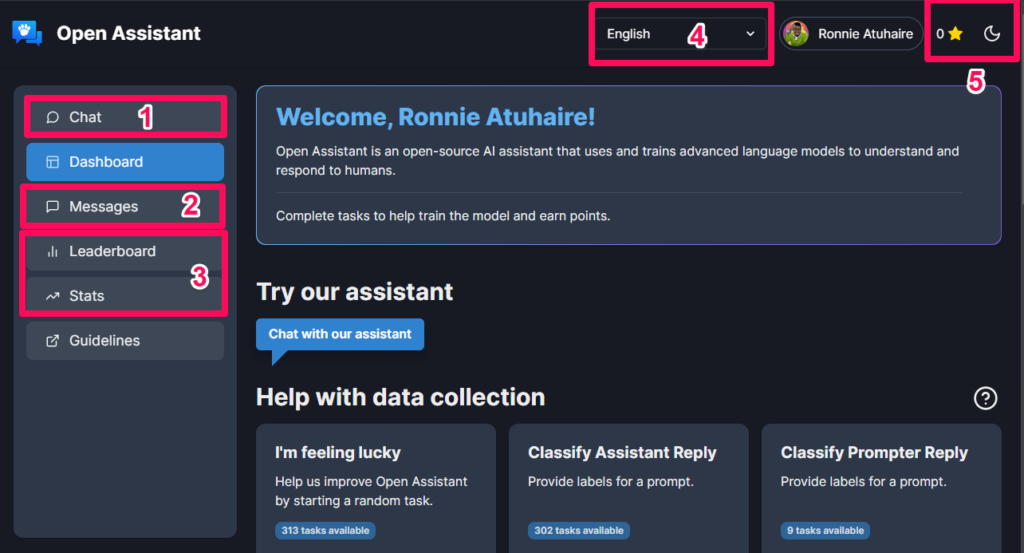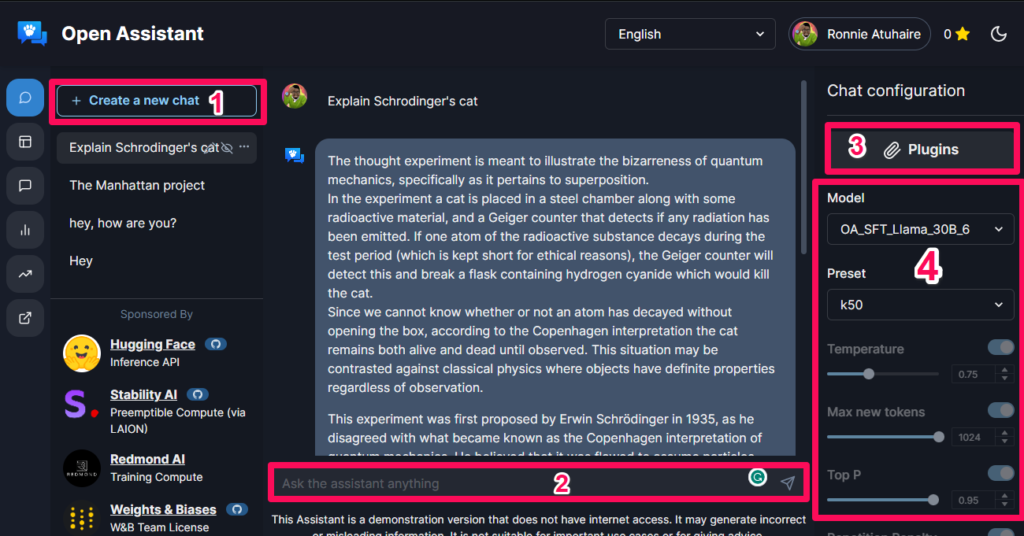Open Assistant is an open-source AI project that aims to create a chat-based assistant powered by advanced language models. Developed by a global team of volunteers and organized by LAION, OpenAssistant provides an opportunity for individuals to contribute to data collection and code development.
In this post, we’ll explore how you can get involved, the technologies used, and the project’s vision for the future.
Note: OpenAssistant is not affiliated with OpenAI, and it operates independently as an open-source project.
Related: Google Bard Vs ChatGPT: Here are 10 Main Differences
Contributing to Open Assistant AI
OpenAssistant is driven by the vision of creating a large language model that can run on a single high-end consumer GPU. The project aims to make the model easily integrable with third-party applications and capable of retrieving information from databases and the internet. While there is no current API available, users can host the model themselves for inference on their own hardware or with a cloud provider.
Contributing to OpenAssistant not only helps in its development but also supports the project’s mission to provide free access to the model code, weights, and data. The project is made possible through the support of Stability AI, which donates compute resources to host a free public instance of the best current model.
Related: A Comprehensive Beginner’s Guide to Google Bard
Getting Started With Open Assistant AI
- To get started, head over to the official website.
- Create an account if you don’t have one.
- This is the main dashboard: With major features explained below
The Dashboard

- To get started with chat prompts.
- Messages from the platform itself.
- You will find contribution stats here.
- You can choose your favorite language from here
- Toggle the button for Light/Dar mode from here.
The Chat Area

- Create a new chat button (Separate Instance).
- Enter your prompts in this area.
- You can add plugins directly from a URL.
- Toggle the model to use.
Technologies Used
OpenAssistant leverages a range of technologies to power its AI capabilities. The Python backend utilizes FastAPI for the data collection app and the inference backend. The front end is built with NextJS and Typescript, providing a seamless user interface for interacting with the assistant.
The machine learning codebase heavily relies on PyTorch and incorporates libraries such as HuggingFace Transformers, accelerate, DeepSpeed, bits and bytes, NLTK, and more.
Related: In the Age of AI: A Beginners Introduction to Artificial Intelligence
Developer Corner
OpenAssistant thrives on community participation. Whether you’re interested in data collection or coding, there are multiple ways to contribute. Visit the OpenAssistant website and join the data collection efforts to help improve the model’s training.
If you have coding skills, explore the GitHub repository, comment on open issues, and express your interest in contributing. Be sure to review the project’s contributing guide for a smooth collaboration experience.
Conclusion
OpenAssistant is an exciting open-source project that invites individuals to participate in shaping the future of AI. By contributing to data collection or code development, you can play a crucial role in enhancing the capabilities of this chat-based assistant.
Join the global community of volunteers and help OpenAssistant become an accessible and powerful AI tool. Together, we can pave the way for a more inclusive and collaborative AI landscape.
Discover more from Dignited
Subscribe to get the latest posts sent to your email.












